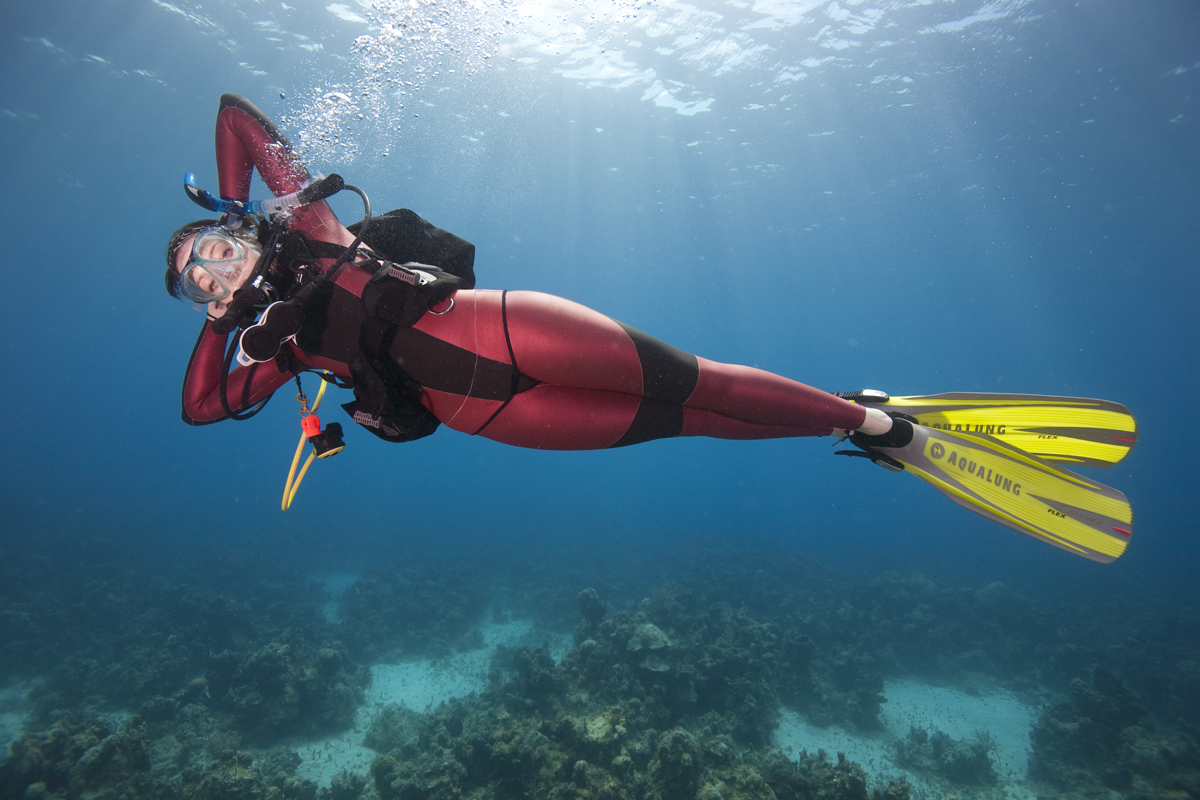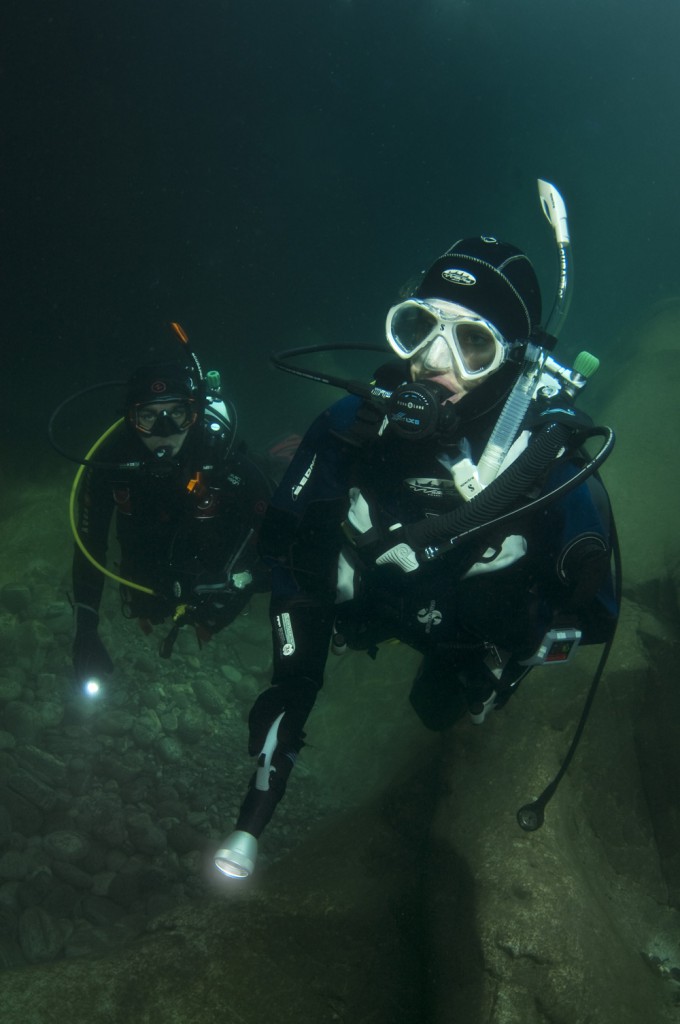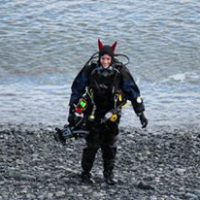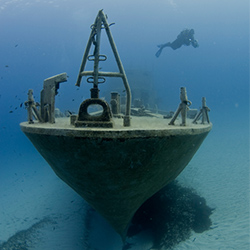At some point we’ve all looked at dive guides and instructors with envy and slight suspicion; they must be hiding a pair of gills somewhere underneath all of that perfectly configured kit – how else could anyone breathe so little? And we all know the dreaded question asked when we return from a dive: “How much air have you got left?”
The good news is that if you feel like the one who always gives the thumbs up before everyone else, there’s lots of things you can do to improve your air consumption and make your dives last longer:
#1 Buoyancy and Weighting: master neutral buoyancy by checking your weights and making sure you are trimmed to perfection. Fighting with buoyancy problems is a lot of effort, and constantly putting air in and out of your BCD needlessly will quickly suck up your air supply.
 The PADI Peak Performance Buoyancy specialty course will help you master neutral buoyancy
The PADI Peak Performance Buoyancy specialty course will help you master neutral buoyancy
#2 – Maintain your Kit: make sure you regularly check your equipment for any leaks (for example, deteriorating o-rings in your first stage/pillar valve are a common cause of air bubbles) – and get your equipment serviced regularly.
#3 – Configure your Kit: experiment with different set-up positions until your resting position in the water is as near to horizontal as possible. This will keep you streamlined in the water and result in less exertion whilst diving.
#4 – Keep it Small: when taking spares, use accessories which are designed for pocket storage. Reducing the bulk in your pockets will also keep you streamlined.
#5 – Relax: perhaps the biggest factor – reduce your stress and just enjoy the ride; by reducing your workload under the water, you’ll reduce your air consumption vastly.
#6 – Slow Down: making calm, slow and deliberate movements will help you to keep your breathing rate under control so that you take slow, deep and controlled breaths.
#7 – Keep Warm: the colder you are, the more energy your body uses – and so the more air you’ll guzzle. Remember that you lose heat from your body around 20 times faster in water than in air, so make sure you wear adequate exposure protection to avoid getting too cold.
 When planning to dive in cold water, the PADI Dry Suit specialty course is invaluable
When planning to dive in cold water, the PADI Dry Suit specialty course is invaluable
#8 – No Hands: Don’t use your hands – use your fins. Swimming with your hands is mostly ineffective, and only causes you to work harder which in turn, uses up your air faster. (The exception here, of course, is if you have physical limitations to finning).
#9 – Dive More: the more diving you do, the more familiar your equipment will feel, the more comfortable you’ll feel in the water and therefore, the more relaxed you will be on your dives (remember point #5).
So, the next time you head into the water, try practicing these little tricks and you’ll soon find that you outlast your previous dives – and your buddies!

